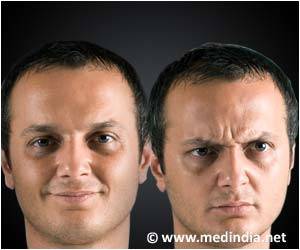Researchers sought to differentiate the little-understood “purging disorder” from the more well-documented bulimia nervosa, with which it is often confused.

Purging Disorder Versus Bulimia Nervosa
Both purging disorder and bulimia nervosa are eating disorders characterized by self-induced vomiting and other types of purging. However, a central characteristic of bulimia is large, out-of-control eating episodes, whereas purging disorder isn’t defined by binge eating.‘Purging disorder and bulimia nervosa are eating disorders that are equal in severity and chronicity but there are still differences in clinical presentation.’





Moreover, purging is an essential attribute of purging disorder, whereas bulimia nervosa may include non-purging behaviors like fasting or excessive exercise.“In both conditions, people are going to extreme lengths to control their weight,” said K. Jean Forney in the College of Arts and Sciences at Ohio University who specializes in eating disorders.
Because bulimia nervosa is well understood, it is easily diagnosed in the Diagnostic and Statistical Manual of Mental Disorders (DSM), which is used to diagnose mental health disorders.
Purging disorder, however, hasn’t been well researched, and thus falls into the more ambiguous “residual” categories of the DSM.
Why it is Important to Know About Purging Disorder?
People tend to think conditions in the residual category are less dangerous, but that isn’t true. There is plenty of cross-sectional data that suggests that the purging disorder is just as serious as bulimia nervosa.Because of its relative obscurity in the psychiatric world, until it is better understood, people suffering from purging disorder do not have psychiatric or psychological treatments that have been tested for their specific symptom presentation.
Advertisement
Purging disorder was first researched and identified in 2005 by Pamela Keel, a psychology professor at Florida State University. Researchers wanted to continue this initial research so that the prognosis of purging disorder could be better understood.
Advertisement
The study found no significant difference in eating disorder presence, recovery status, and level of eating pathology between diagnostic groups.
However, it concluded there are significant enough differences between bulimia nervosa and purging disorder to necessitate specific treatments for purging disorder. To do so, it is important to treat purging disorder as a full threshold eating disorder.
It also found significant enough differences between bulimia nervosa and purging disorder that the interpretation of symptoms that lead to a diagnosis, known as clinical presentation, could be uniquely classified.
Only a small proportion of women with purging disorder developed bulimia nervosa, indicating that these are distinct eating disorders.
However, the study had no predicted outcomes. Despite setbacks, researchers are hopeful that the study will reignite further interest in purging disorder, and it will eventually lead to more effective treatment.
Source-Medindia








